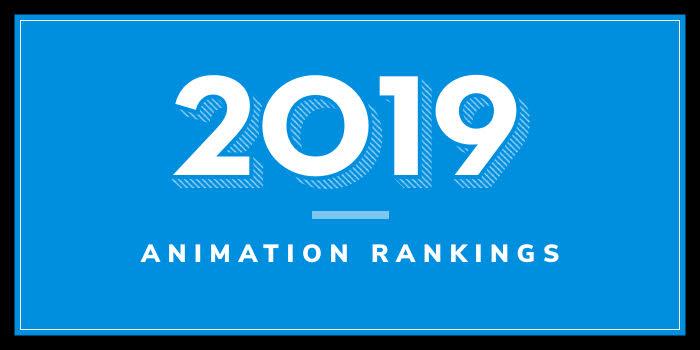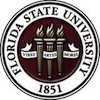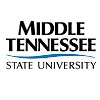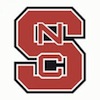
What are the top animation schools in the South?
| Ranking | School | State |
|---|---|---|
| 1 | Ringling College of Art and Design | Florida |
| 2 | Savannah College of Art and Design | Georgia |
| 3 | University of Central Florida | Florida |
| 4 | Full Sail University | Florida |
| 5 | Clemson University | South Carolina |
| 6 | The Digital Animation & Visual Effects School | Florida |
| 7 | Florida State University | Florida |
| 8 | Middle Tennessee State University | Tennessee |
| 9 | North Carolina State University at Raleigh | North Carolina |
| 10 | Louisiana State University | Louisiana |
Our 2019 list of the Top 10 Animation School Programs in the South. For an explanation of ranking criteria, click here.
 1. Ringling College of Art and Design, Sarasota, Florida
1. Ringling College of Art and Design, Sarasota, Florida
Ringling College of Art and Design (RCAD) was established in 1931 by circus baron, art collector, and real estate developer John Ringling. The school opened with just 75 students and 111 course offerings. Today, RCAD serves 1,400 students enrolled in BFA degrees in eleven disciplines and BA degrees in two. Computer Animation, Film, Game Art, Motion Design, and Visual Studies are just a few majors.
The Computer Animation program is one of the most popular programs at RCAD, accounting for around 20% of the student population. Established in 1990, the BFA in Computer Animation allows students to do it all. Students learn to create characters and tell their stories, as well as design, paint, model, texture, animate, light, composite, and edit original films. The program also focuses on teaching students how to combine essential technical skills with conceptually original ideas that affect an audience emotionally, visually, and intellectually.
Course highlights include Computer Animation I-VI, Development of Art & Ideas, Drawing I-II, Figure Drawing I-II, Film & Narrative, Story Development I-III, Traditional Animation I-II, Visual Development for Computer Animation I-II, and Writing Studio
A BFA in Motion Design is also available. Students in the program study animation, concept design, storyboard art, videography, composition, sound design, and art direction. Course highlights include Animation, Animation Techniques, Contemporary Design Culture, Development of Art and Ideas, Drawing and 2D Design, Drawing and 3D Design, 4D Design, Motion Design, Professional Writing for Designers, and Writing Studio.
Students in the program will have the opportunity to work across many different fields with students of other majors and with actual, professional clients.
RCAD graduates have worked on every Oscar-winning animated feature since 2003, with 14 alumni working on 2016 Oscar winner, Inside Out and 21 working on 2017 Oscar winner Zootopia. Graduates have also gone on to work at Blue Sky Studios, Cartoon Network, DreamWorks Animation, Electronic Arts, Lucasfilm, Nickelodeon, Pixar, Sony Pictures Imageworks, Walt Disney Animation, and many others.
 2. Savannah College of Art and Design, Savannah, Georgia
2. Savannah College of Art and Design, Savannah, Georgia
Savannah College of Art and Design (SCAD) was founded in 1978. With campuses in Savannah, Atlanta, Hong Kong, and Lacoste, France, SCAD is home to nearly 13,000 students from nearly 50 states and 115 countries. The school offers more than 40 majors and 60-plus minors, including animation, one of the school’s top majors. Offered through the School of Digital Media, five options are available for aspiring animators including a BFA in Animation (Atlanta, Hong Kong, Savannah), an MA in Animation (Savannah, eLearning), an MFA in Animation (Atlanta, Savannah, eLearning), and Minors in Animation or Animated Illustration and Publication Design. Both Minor options require 25 credit hours of study.
The BFA in Animation teaches students to master 2-D, 3-D, Stop-motion, Digital Modeling, Rigging, Lighting, Look Development, and more. Per the school, students in the program will “collaborate with and take electives in other majors, such as visual effects, motion media, interactive design and game development, sound design, film and television, and sequential art.” Students will graduate from the program as “dynamic, multifaceted” animators, who are “extremely marketable and ready to take the industry by storm.”
The MA is a 45 credit hour program that consists of courses such as Animation Aesthetics and Practice, Art Criticism, Computer-Generated Modeling and Design, Environment Look Development, and 3D Cartoon Character Animation. Students will also complete a Collaborative Project and the Final Animation MA Project, provides students the opportunity to synthesize their learning into a cohesive project piece. Students propose, develop and execute a project that is then cut into their reel.
The MFA requires 90 credit hours of study, with many of the same courses as the MA program. Additional courses include Media Theory and Application, and Storyboarding and Previsualization. MFA students will also complete Animation MFA Thesis Exploration and Research, Animation MFA Thesis Visual Component Production, and Animation MFA Thesis Completion. A Graduate Internship is also part of the program.
Graduates of SCAD’s animation programs have landed positions at major studios such as Walt Disney Animation Studios, Digital Domain, and Bento Box Entertainment.
 3. University of Central Florida, Orlando, Florida
3. University of Central Florida, Orlando, Florida
Established in 1963 and serving approximately 68,571 students across four campuses, the University of Central Florida (UCF) is the nation’s second-largest university and Florida’s largest by enrollment. One of the nation’s youngest universities, UCF offers around 230 degree programs across 13 colleges. The College of Arts and Humanities is home to the School of Visual Arts & Design (SVAD), which offers a number of degree programs for aspiring animators.
Options include a BFA in Art with an Emerging Media Track/Character Animation Specialization and an Emerging Media Track/Experimental Animation Specialization. Per the school, Character Animation “allows students to integrate the multiple domains of art, storytelling, and technology.” The program is “designed to provide a solid foundation in techniques and theory in one focused area of competence, as well as a broad understanding of related disciplines including arts, humanities, and technology.” The program also offers, “extended experience in working in multidisciplinary teams on realistic problems.”
Graduates of the program are prepared to seek careers as animators, modelers, riggers, or texture artists in the film or computer game industries.
The Experimental Animation Specialization “offers students the opportunity to explore expression through innovative and hybrid analog and digital methodology.” Students in the program will “engage in classic, current, and widely varied techniques and mediums making moving images, which may be narrative or non-narrative.” Students will have the opportunity to “develop a unique creative vision which culminates in the completion of a BFA thesis project and exhibition/screening.”
All animation students will use industry-leading software on Mac and PC-based platforms to create projects, works and portfolios.
For students looking to continue on to a graduate program, UCF SVAD offers an MA in Visual Language and Interactive Media, and an MFA in Emerging Media with an Animation and Visual Effects, Entrepreneurial Digital Cinema, or Studio Art and the Computer Track. The MA focuses on the development of advanced skills for digital media professionals, while the MFA is a terminal scholarly and creative degree suitable for students wishing to pursue careers as professors in higher education or as creative leaders in industry.
The graduate programs are designed to “emulate the professional studio environment, providing each student with an opportunity to assume an artistic leadership role. The principal emphasis is placed on narrative film structure and the entrepreneurial aspect of animation as related to studio and job creation.” Courses for the programs are designed to give students the “ability to understand the collaborative function of a commercial studio.” Labs and studios are equipped with the same industry-standard software and hardware used in professional studios.
Graduates of SVAD’s Emerging Media Program work in creating simulations for the U.S. Navy, NASA, DISTI, Lockheed Martin and other local and regional companies. In addition, SVAD alumni are currently working nationally and internationally for major animation and gaming companies such as Walt Disney Animation Studios, Reel EFX, Nickelodeon Animation Studios, Electronic Arts, Riot Games, and Blizzard Entertainment.
 4. Full Sail University, Winter Park, Florida
4. Full Sail University, Winter Park, Florida
Established in 1979, Full Sail University serves approximately 15,000 students enrolled in a variety of Bachelor’s, Master’s, and Associate degree programs in the areas of Entertainment, Media and the Arts. Graduate Certificates are also available. Options for aspiring animators include a BS in Computer Animation that takes 20 months to complete on-campus, and 32 months to complete online.
Students can expect to take courses such as 2D and 3D Animation, Character Animation, Animation Production, Shading and Lighting, Character Rigging, and Visual Development. A total of seven Project and Portfolio courses must be completed as well. They include Project and Portfolio I & II: 3-D Arts, and Project and Portfolio III-VII: Computer Animation.
These unique Project and Portfolio courses combine “hands-on learning experiences with summative and formative portfolio assessments.” The courses are taken in addition to an internship, which can be pursued after the student has successfully completed 50% of the required credit hours for the BS program.
Graduates of the programs at Full Sail University have been credited on films such as Ant Man and the Wasp, Avengers: Infinity War, Jurassic World: Fallen Kingdom and Solo: A Star Wars Story, Deadpool 2, Incredibles 2, and many others.
 5. Clemson University, Clemson, South Carolina
5. Clemson University, Clemson, South Carolina
Established in 1889 as Clemson Agricultural College, Clemson University serves around 23,100 students enrolled in 80+ majors, 80+ minors, and 110+ graduate degree programs across seven colleges. The College of Engineering, Computing and Applied Sciences, School of Computing offers several programs for aspiring animators including an MFA in Digital Production Arts (MFA DPA), a new MS in DPA, and a Minor in DPA.
The DPA MFA Program is a professional degree program that offers a unique blend of instruction from art, computer science, computer engineering, graphic communications, performing arts, philosophy, and psychology, together with newly designed courses targeted at production techniques specific to the animation, visual effects, and electronic games industries. Sample courses include Computer Animation, 3D Modeling, Compositing, Computer Games, FX, Lighting, Rigging, Simulation, and Visual Effects, to name a few.
The new MS in DPA focuses on the technical components of visual effects production for the film, electronic games, and commercial video industries. Sample courses include 3D Modeling and Animation, Virtual Reality, 2D Game Engine Design, Character Animation, Physically Based Visual Effects, Visual Foundations for Digital Production, Audio Engineering, Improvisation, and Advanced Animation.
DPA program graduates have worked on films such as Frozen, Hobbit, Rio, How to Train Your Dragon, and The Croods. Many have been hired by major studios such as Pixar, Walt Disney Animation Studios, Blue Sky Studios, DreamWorks, EA, ReelFX, and Sony Pictures Imageworks.
 6. The Digital Animation & Visual Effects School (DAVE School), Orlando, Florida
6. The Digital Animation & Visual Effects School (DAVE School), Orlando, Florida
Founded in 2000, The Digital Animation & Visual Effects School (Dave School) is a 35,000 square foot facility located on the backlot of Universal Studios Florida, Soundstage 25. The school offers intensive and “comprehensive training” in 3D Modeling, 3D Animation, 3D Visual Effects, and Game Production. Programs for aspiring animators include a Bachelor’s degree in Animation or Motion Graphics, and a Diploma and Associate Program in Visual Effects Production or Game Production.
The Bachelor’s in Animation is a 30-month program “provides students with a practical application to the animation process.” Students in the program will learn and understand acting for animators, body and facial animation, character rigging, creature animation, drawing for animators, previsualization, principles of movement, rigging, visual storytelling, and performance using a variety of software.
The 30-month Bachelor’s in Motion Graphics introduces students to 3D Modeling and Animation for Motion Graphics. Students in the program will learn and practice the principles of Animation, Compositing, Composition, and Design. The 12-month Game Production Program covers Fundamentals of Computer Animation, Character, Prop and Environment Modeling, Level Design, Visual Effects, and Digital Modeling and Sculpting.
The 12-month Visual Effects Program covers 3D Animation, Digital Compositing, 2d/3D Tracking, Digital Modeling & Sculpting, Visual Effects, Studio Production, Lighting and Texturing, and Animation Fundamentals. Programs are offered either online, on-campus or in hybrid format.
DAVE school graduates and instructors have worked on major productions such as The Hunger Games, Green Lantern, Game of Thrones, Terminator Genisys, Jurassic World, Captain America, The Hobbit, Godzilla, and many others.
 7. Florida State University, Tallahassee, Florida
7. Florida State University, Tallahassee, Florida
Founded in 1851 and serving 41,900 students from every Florida County and 132 countries, Florida State University (FSU) is one of the largest and oldest of the 11 institutions of higher learning in the State University System of Florida. The school offers more than 275 degree programs through 16 colleges. The College of Motion Picture Arts houses FSU Film School, which offers several programs for aspiring animators. Options include a BFA in Motion Picture Arts – Animation and Digital Arts, and The Torchlight Program.
BFA students will begin with Film History, Screenwriting, Directing, Cinematography, CG and Live Action Production, Editing and Sound. Students will then learn the craft of digital filmmaking through 3D Animation, Character Development, Compositing, Modeling, Stop Motion, Texturing, Rendering, and Visual Effects Cinematography. Other program highlights include the opportunity to collaborate in small cohorts and work alongside industry professionals, and the opportunity to create four major films before graduation, one of which is an area-specific thesis film.
The Torchlight Program gives FSU animation students who would like to freelance or start their own studios the opportunity to learn about “current and emerging business practices of the motion picture industry.” The non-degree-granting academic program “functions as a gateway between school and career by providing instruction in current and emerging business practices of the motion picture industry.” The program offers coursework in key areas such as Distribution, Marketing, and Motion Picture Financing.
The program is located at the Torchlight Center in the studio facilities at FSU’s Critchfield Hall, which includes production offices, conference rooms, post-production facilities, and a sound stage.
 8. Middle Tennessee State University, Murfreesboro, Tennessee
8. Middle Tennessee State University, Murfreesboro, Tennessee
Middle Tennessee State University (MTSU) opened on September 11, 1911 as one of three state normal schools for teacher training. Today, the school serves nearly 26,500 students enrolled in more than 115 programs through nine university colleges. The College of Media and Entertainment, Department of Electronic Media Communication, offers a BS in Animation and Mass Communication with Concentrations in Electronic Media Communication, New Media Communication, and Photography.
The Electronic Media Communication Concentration offers two specialties: Electronic Media Production (video and film production) and Electronic Media Management (media management). Animation and Entertainment Technology Minors are also available as well as an MS in Media and Communication. Students in the MS program may choose six hours of approved electives in Animation.
The Animation Programs at MTSU prepare students for careers in Character Animation, Motion Graphics, and Visual Effects. Electronic Media Production students are also prepared to create Animated and Feature Films, as well as content for Documentary Films, Television, and Educational Videos.
 9. North Carolina State University at Raleigh, Raleigh, North Carolina
9. North Carolina State University at Raleigh, Raleigh, North Carolina
North Carolina State University (NC State) was established in 1887 and it serves nearly 35,500 students enrolled in more than 300 degree programs through 12 colleges and 65 academic departments. The College of Design, Department of Art + Design, offers several programs for aspiring animators. Programs include a Bachelor of Art + Design: Animation + Interactive Media, a Masters of Art + Design (MAD): Experimental Media Arts with an Animation and Digital Storytelling Area and a Minor in Art + Design.
Per the school, the undergraduate animation program “gives students the opportunity to learn as they develop their creative portfolios through a wide-range of two-dimensional and three-dimensional traditional materials and computer-based processes.” These include “drawing and illustration, visual composition, soft materials construction, fibers, graphic and interactive narratives, motion graphics, visual effects, animation, web design, game design, interactive and computational media, virtual and augmented reality, 3D modeling, digital fabrication, and more.”
Animation students will take studios that introduce them to Principles of Storytelling, Animation, and Character Design through Sequential Imaging, along with courses such as Digital Imaging, Design Thinking, Advanced Writing, and Drawing. Students will also complete an optional internship and participate in the Art + Designer Showcase.
The MAD program “encourages students to explore the intersection of digital and material technologies to create interactive and engaging experiences that push the boundaries of storytelling, learning and play. The outcome of graduate student work can be the development of creative portfolio works that are backed by rigorous exploration, discovery, and historical and contemporary precedents.”
Graduates of the animation programs at NC State are prepared to work on short and full-length animated films, in character development for animated films, games, and digital storybooks, and on interactive and experimental projects.
 10. Louisiana State University, Baton Rouge, Louisiana
10. Louisiana State University, Baton Rouge, Louisiana
Louisiana State University (LSU) welcomed its first class on January 2, 1860. The school offers 200 programs across 11 colleges and schools to nearly 31,000 students. The College of Art + Design, School of Art offers several multidisciplinary programs for aspiring animators including a BFA in Studio Art with a Concentration in Digital Art and an MFA in Digital Art. The programs allow students to refine their skills in classes that provide a broad, integrated understanding of creative practice across 3D modeling, animation, video, web, interactive systems, photo-based media, and digital printmaking.
Per the school, the Digital Art programs emphasize “emergent forms” and “student work may manifest through integrated media including animation, games, visual effects, networked art, robotics, physical computing, printed matter, performance, public intervention, audio composition, installation, and digital fabrication, among limitless combinations.”
Students may also choose to pursue the interdisciplinary Master in Digital Media Arts & Engineering (DMAE) or the 21-credit-hour Minor in DMAE, a collaborative endeavor with seven campus units at LSU.
With around 500 students, the Digital Art Program provides access to the Arts, Visualization, Advanced Technologies and Research (AVATAR) Initiative and The Digital Art and Design Association (DADA). Both provide support to Digital Art students as they pursue “opportunities throughout the university and the broader community.”

